Ride free on New Year’s Eve
December 29, 2010
 Don’t drink and drive–time-honored advice, but too often ignored unless you’re hoofing it or have a designated driver at the ready.
Don’t drink and drive–time-honored advice, but too often ignored unless you’re hoofing it or have a designated driver at the ready.
This New Year’s Eve, that designated driver just might be wearing a Metro uniform.
Revelers can party to their heart’s content and still get safely and responsibly home without spending a dime. Metro is offering free passage for all passengers, whether they’ve been drinking or not, on its entire public transit system between 9 p.m. and 2 a.m. on New Year’s Eve and New Year’s Day morning.
In addition to regular surface street bus service, the free rides are available on the Orange Line Busway, which traverses the Valley between Warner Center and Universal City, and the Silver Line, a guided busway between the Artesia Transit Center and El Monte Station.
The free service also includes a trio of light-rail systems: the Metro Gold Line, running between Pasadena and East Los Angeles through downtown; the Metro Blue Linebetween downtown Los Angeles and Long Beach; and the Metro Green Line, connecting Norwalk and El Segundo. And those who prefer the subway can hop a free ride on the Red Line from downtown’s Union Station to North Hollywood, or the Purple Line, from Union Station to Western Avenue.
Here are detailed routes, stops and schedules of all the lines. For more specific information, please call (323) GO-METRO (466-3876) Cheers!
Posted 12/29/10
A slam dunk for mental health
December 21, 2010
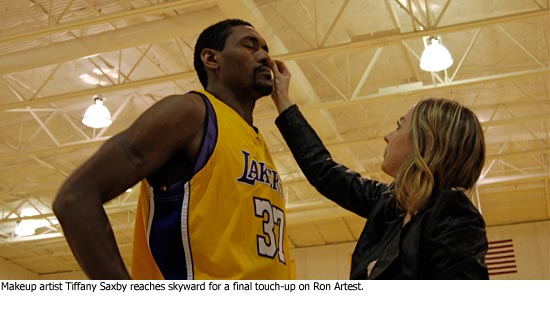
No doubt, millions of viewers nationwide thought Ron Artest was simply having another Ron Artest moment.
The NBA veteran had long been known for his slightly—or largely—off-kilter comments and behavior on and off the court, including a violent charge into the stands in Detroit and an appearance on Jimmy Kimmel Live! in just his boxers.
So when an ABC reporter asked the first-year Los Angeles Laker for a comment just minutes after he’d sparked his team to a Game 7 triumph over the Boston Celtics, he let loose with a winner. He thanked his psychiatrist.
Yes, it was indeed a Ron Artest moment—but one that he says was premeditated and timed for maximum impact to let people know—especially the young people out there—that therapy had helped him work through many difficult chapters in his life. “I was doing it for a good reason,” he says of his expression of gratitude. “I didn’t know what was going to happen but I wanted it to take off.”
And take off it did.
Artest’s remark quickly set in motion an unusual collaboration that led on Tuesday to the debut of a public service announcement from Los Angeles County’s Department of Mental Health. (See video below.) Called “You Can Do It,” the spot features Artest on the court and was produced by the Hollywood executive behind the movie “The Soloist,” the story of L.A. Times columnist Steve Lopez’s relationship with homeless musician Nathaniel Ayres.
Artest openly credits an array of therapists and counselors with helping him relax and mature during a career that, for a time, brought him more notoriety than respect. He’s seen marriage counselors and parenting experts and therapists who specialize in the pressure-packed world of professional sports.
Artest says he also knows from growing up in the rougher neighborhoods of Queens how easy it is to be swept up in the criminal life or to simply lose your way in a family that is broken or abusive. “Some kids,” Artest says, “aren’t as mentally tough.”
This is the audience that the player and the mental health department hope to reach in the public service announcement, filmed last month at the Lakers’ practice facility in El Segundo. (See photo gallery and extended video interview with Artest below.)
Orchestrating the effort for the county has been clinical psychologist Dr. Alysa Solomon. She says that the minute she heard Artest give a shout-out to his “psychiatrist” (actually a psychologist), she dove for her Blackberry to e-mail her boss, mental health director Dr. Marvin J. Southard. “I was overexcited,” she says. “It was a universal jaw dropping moment.”
For nearly two years, Solomon had been leading the mental health agency’s “social inclusion” campaign, underwritten by California’s so-called Millionaires’ Tax and aimed at ending the stigma that too often stops people from seeking the psychological help they need. One way to do that, she thought, was to recruit celebrities who’d be willing to be interviewed by her about their own mental health issues—new territory for a department steeped in a culture of confidentiality.
First up was actor Tom Arnold, who has spoken widely of his battle with drug addiction and his life in recovery. The interview was filmed but lawyers for the actor blocked it from being seen, Solomon says, because the legal paperwork didn’t make clear that the county could not profit from the effort. “Our county counsel is not an entertainment law firm,” she says. “But we learned the process.”
In the meantime, Solomon had begun developing a friendship with violinist Ayres, who by then was receiving services from the mental health department. Solomon thought Ayres and Lopez would be perfect for the anti-stigma campaign. So she reached out to “The Soloist’s” producer. In him, she found a kindred spirit and a savvy ally.
From the earliest days of “The Soloist’s” journey from a book by Lopez to the big screen, producer Gary Foster was committed to infusing it with a sense of authenticity by shooting scenes in the heart of Los Angeles’ Skid Row. Although Robert Downey Jr. and Jamie Foxx would be the marquee names, the supporting cast would be the people of the streets.
“We thought it would be wrong to just be the circus that came to town and exploit what was going on down there,” explains Foster, who says the movie’s real-life characters were paid for their performances.
Throughout the filming, Foster and others involved with the project spent days in the teeming courtyard of a Skid Row housing and mental health agency called Lamp Community. There, he got to know the human beings behind Los Angeles’ homeless statistics and their daunting challenges with mental health. After his movie disappeared from theaters, Foster remained passionate about ways to communicate the need for psychological care to sufferers in all strata of society. He took a seat on Lamp’s board.
When Solomon pitched her idea for public service announcements, Foster says, it was a natural—“a great way for me to use my skills to further the mission.” Among other things, he’d know who to tap for help, such as Mob Scene Creative + Productions, an award winning entertainment marketing company that would take the lead in making the PSA.
But the anticipated starting lineup would need to be changed, with Ayres and Lopez taking a seat on the bench, thanks to Artest’s out-of-the-blue post-game comment and a highly publicized appearance at an East L.A. school, where he encouraged the kids to seek counseling if they were having troubles in their lives.
“Ron fell into our lap,” says Solomon, who was thrilled because of the athlete’s natural appeal to a demographic the mental health department had targeted—young teenage boys who might be too embarrassed or afraid to reveal their psychological struggles.
By mid-September, a short script had been jointly created by officials in the mental health department and advocates in the community. They dreamed of hearing Artest say: “I got help and got better, you can get better too. Take that first step and be a champion!”
Foster and Solomon then sent an e-mail to Artest’s publicist and friend, Heidi Buech, saying they’d “be honored to have Ron participate in our PSA program.” Within 24 hours, he was on board.
“Here’s one of the most unique celebrities in Los Angeles sports and he’s brave enough to talk about his personal life,” Foster says. “I think it’s going to have great therapeutic effect.”
Artest, for his part, says the decision was easy.
“People need to be educated,” he says of those who denigrate the value of talking to professionals. “People think you’re crazy or weak but that’s not true.” More specifically, he says, “I’m trying to help build confidence and a support system for kids that don’t have one.”
Although he wanted to create a bit of a stir by thanking his Houston-based sports therapist after the NBA finals, he says he never intended to be “one of the faces of the movement.” He says he “inherited” it.
“Once I said what I said, it was like, wow!”
And there’s more to come.
On Christmas night, Artest will announce the winner of a raffle for his first and only championship ring. The proceeds from “Win My Bling,” which amount so far to almost $600,000, will go to a number of mental health charities and to Artest’s Xcel University, a foundation he established to help at-risk kids build self respect and overcome their difficult environments.
Then in February, he’ll be headed to Washington D.C. to testify on behalf of HR 2531, a bill sponsored by Rep. Grace F. Napolitano (D-Ca.) that is aimed at boosting mental health services in schools.
“It’s like going into the NBA,” he says. “I never dreamed I’d be in the NBA. And I never dreamed I’d be going to The Hill. Ever.”
And that’s something to talk about.
The Ron Artest/ Los Angeles County public service announcement.
http://zevyaroslavsky.org/videos/RAP_BeAChampion30_TEXTED_FINAL_HD-Fixed.f4v
An extended interview of Artest by Dr. Alysa Solomon of the mental health department.
A photo gallery from the PSA filming in El Segundo.
Posted 12/12/10
Audit calls out DCFS cell phone abuse
December 21, 2010
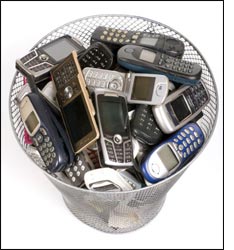 The Los Angeles County Department of Children and Family Services dialed up at least $514,000 in “potentially unnecessary and inappropriate” cell phone service charges in 2009—part of a pattern of loose oversight and lax management of the phones uncovered in a new county audit.
The Los Angeles County Department of Children and Family Services dialed up at least $514,000 in “potentially unnecessary and inappropriate” cell phone service charges in 2009—part of a pattern of loose oversight and lax management of the phones uncovered in a new county audit.
The report, released today by Auditor-Controller Wendy L. Watanabe, found that the department, which spends $2.2 million a year on cell phone services, had at least 250 phones for which it could not identify the users. It also paid monthly service fees for more than 1,400 cell phones and 220 broadband cards that were sitting idle in 2009.
Moreover, the department footed the bill for employees’ personal international long distance charges as well as other potentially inappropriate charges for roaming, directory assistance and call forwarding.
“Our review disclosed significant weaknesses in DCFS’ controls over its cell phones,” Watanabe said in a summary of the audit’s findings filed with the Board of Supervisors.
Watanabe’s report to supervisors said that the department’s management already is beginning to take corrective action by updating their cell phone inventory, cancelling service for unused phones and changing the ways in which they review monthly bills.
Among the questionable cell phone use cited in the audit:
–One employee racked up more than $2,000 in personal international long distance bills between December, 2008, and November, 2009, and did not reimburse the department.
–Another claimed to have lost her phone but didn’t report it missing. Over the course of 14 months, the department paid $8,000 in service charges on the phone, including roaming charges from Mexico.
–An employee ran up $2,827 in texting charges from December, 2008 through November, 2009. In all, the department paid $21,000 for employee texting in 2009.
–Employees dialing directory assistance from their cell phones cost the department more than $54,000 in 2009, and $9,000 for call forwarding charges between December, 2008 and November, 2009. A single employee accounted for $2,533 of the call forwarding charges during that period.
The audit recommends that DCFS management begin keeping an accurate cell phone inventory, including up-to-date records on who’s using the phones. It also urges the department to deactivate unassigned and unused phones and broadband cards and to institute monthly reviews of cell phone and broadband bills.
And it recommends tighter controls to ensure that extras such as directory assistance and texting are needed—and that employees who use those services for non-business purposes reimburse the county.
Posted 12/21/10
Sweet Honey rocks the Broad
December 16, 2010
Since 1973, the a cappella vocal group Sweet Honey in the Rock has been carrying its musical message of hope, justice and peace throughout the world. Taking its name from a passage in the 81st Psalm, this five-member female ensemble, always accompanied by a sign-language interpreter, taps into African-American singing and storytelling music traditions. Through the years they’ve earned multiple Grammy awards for their recordings and deeply touched audiences with their compelling live performances.
This weekend, the group brings its special brand of inspirational holiday cheer to the Broad Stage in the Santa Monica College Performing Arts Center, located on the school’s Madison Campus at 1310 11th St. in Santa Monica. It takes place on Sunday, December 19, 2010, at 7:00 p.m.
And here’s another sweet holiday treat: kids 12 and under get in for half-price.
Order tickets online, and here is information on directions and parking.
Posted 12/16/10
Holiday Celebration’s fun and free
December 16, 2010
 Something old (childhood holiday memories) and something new (wristbands) are on the program at the county’s 51st annual free Holiday Celebration, which takes place on Dec. 24 at the Dorothy Chandler Pavilion.
Something old (childhood holiday memories) and something new (wristbands) are on the program at the county’s 51st annual free Holiday Celebration, which takes place on Dec. 24 at the Dorothy Chandler Pavilion.
Along with a lineup of choirs, dancers and other acts, the celebration also will feature a couple of short movies submitted by the public on the theme of childhood holiday memories.
The show runs from 3 p.m. to 6 p.m. This year, for the first time, wristbands will be needed to get in. The new system is a response to the shorter running time; in most previous years, the Holiday Celebration has clocked in at six hours.
The wristbands will be handed out beginning at 11:30 a.m. and will be distributed one per customer, so everyone who wants to attend will need to show up in person. After snagging their wristbands, patrons can leave to grab some lunch, explore downtown, or stick around to check out an array of entertainment on the Music Center Plaza. The doors will open at 2:30 p.m. Those without wristbands, meanwhile, can wait for seats to open up in the auditorium as the concert progresses.
And everyone can watch the program live on the Music Center Jumbotron. It’s also airing live on KCET-TV, with a rebroadcast from 8 p.m.-11 p.m., and will be streamed at www.kcet.org.
Parking is free, too. And the Music Center is close to public transportation.
The celebration is a gift to the people of Los Angeles from the county Board of Supervisors—a tradition inaugurated by the late Supervisor Kenneth Hahn.
Posted 12/16/10
Beating the holiday blues
December 16, 2010
It’s the most wonderful time of the year – or so the song goes. But stress, loneliness and other unwelcome feelings can also be as ubiquitous as red-nosed reindeer during the holidays. So what can you do if “merry and bright” isn’t exactly summing up your December?
In preparation for the season, we checked in with the Los Angeles County Department of Mental Health and its medical director, Dr. Roderick Shaner.
For most people, he says, the sources of holiday stress “seem to boil down to a couple of big things: One is concern about fellowship and being lonely. And the other is the set of expectations we have, both for the holidays and for ourselves.”
So what can you do to manage the blues and the expectations? Here’s Dr. Shaner’s advice:
1. Cut yourself some slack in the holiday spirit department.
“Unless you’re up at the North Pole making presents,” he says, “probably between 99.99% and 100% of the population experience stress around the holidays.” Feeling compelled to have the “right” frame of mind can be its own sort of holiday oppression. If your mood isn’t great, hey, you’re not alone — it’s an epidemic. Bad moods don’t get better by being taken too seriously.
2. Remember what people actually want for Christmas.
“We all remember those perfect holidays we had a long time ago, that weren’t so perfect in retrospect,” Dr. Shaner says with a laugh. “And we see in the media all these idealized versions of what we’re supposed to be in the holidays — happy, calm, making everyone feel special. Well, there are no perfect holidays. Our idealized versions are just that.” Buying into all those “shoulds”, he says, just puts you at risk of overextending yourself financially, socially, physically and emotionally — and unnecessarily. “What the people in our lives want most from us is just to see us, and know we love them, and that we have ties to them.”
3. Get real.
“Think realistically about what you’re going to be doing around the holidays, and about what you can and can’t do in terms of scheduling,” Dr. Shaner says. “Make a budget. Make some pre-holiday resolutions about the degree to which you will watch what you eat and drink, how much sleep you’ll get, how much work you’ll do. Recognize that you’ll need good rest, a reasonable schedule of exercise. And then recognize that the holidays are a time when you’ll want to give yourself a little more leeway, and resolve not to beat yourself up.”
4. Look ahead.
“We’re not going to become someone different in the last two weeks of the holiday season, but one way of dealing with the pressure of expectations is to focus on the future,” says Dr. Shaner. So think about where you want to be in the coming year. There’s a reason New Year’s resolutions are a tradition. “It’s a way to recognize not only our limitations, but also our potential. We remember that we’re all works in progress, and that makes us more hopeful and probably happier as well.”
“This is the kind of season in which human ties are most important,” says Dr. Shaner. “When we lose those, it’s easy to drift into despair.” Connect with your family. So what if the folks back home will complain that you haven’t called in six months? Or that you must admit to them that your love life or resume or show business prospects aren’t what you’d hoped for? “Your family and friends can lift your spirits, just as you’ve lifted theirs with your call,” notes Dr. Shaner. If family isn’t an option, try connecting with friends, community groups or neighbors. If seeing someone in person isn’t feasible, send cards. Or texts. Or Facebook greetings. “Actually a lot of what therapy is is helping people reach out,” says the doctor. “People think that isn’t enough, but it often is.”
6. Do something nice for someone.
“Rates of suicide and depression are higher during the holidays, and this is especially true of the poor and the homeless,” he says. “This is the time when those people are most in need of outreach and social inclusion.” You don’t have to do a lot — sometimes even a smile or a season’s greeting is plenty. But, he adds, being nice also happens to be one of the nicest things you can do for your own emotional well being. “Reaching out to people who may be more lonely and isolated is also one of the best ways to combat our own loneliness and isolation.” Ask any volunteer — serving a meal at a soup kitchen, hanging out for an afternoon with someone who’s sick or shut-in, pitching in at your place of worship or local food bank, even donating blood or giving to a good cause can make you feel surprisingly fabulous.
7. Get help if you need it.
When flu season rolls around, you get a flu shot. You call a doctor when you can’t get rid of that cold. If you’re prone to asthma or diabetes, you get regular check-ups. Mental health is just as important. Plus, it’s one of the best forms of preventative medicine on the market. So see somebody. If your insurance doesn’t cover what you need, there are teaching clinics, nonprofits, therapists who work on a sliding scale and counselors who work with faith-based organizations. Don’t know where to start? Try the Department of Mental Health’s new resource page, or its access line at (800) 854-7771. Thinking about investing in yourself for Christmas? L.A. has some of the best therapists in the country. More serious concerns? L.A.’s Suicide Prevention Center Hotline — (877) 727-4747 — has been in business for more than a half-century. “Our community has many resources that can be helpful,” says Dr. Shaner, “but ironically, it’s the stress and worry itself that often keeps people from them.”
Seven tips for safe and sound holidays
December 15, 2010
This time of year can be such a mixed bag, and not just for Santa. There are great parties all over town—but has the guy in the next lane had a few too many? Is that glittering Christmas tree a tinderbox waiting to happen? And how’s the pet of the house expected to know that chocolate and poinsettias can be hazardous to his health?
If all this is starting to sound more like a minefield than a holiday, relax. Los Angeles County’s resident experts are here to help.
Their tips will help you navigate the pitfalls of the season—from the basics (driving sober) to the more arcane (making sure you’re not overcharged at the cash register.) They’ll even help you score a free bus ride on New Year’s Eve.
1. Don’t drink and drive.
This is rule No. 1 for a reason. Sheriff’s officials implore you to do the right thing, which means not getting behind the wheel if you’ve been drinking. If you need any reminders of the possible consequences, Sgt. Joseph Jakl, supervisor of the sheriff’s Traffic Services Detail, thinks this YouTube video from the city of Santa Clarita sums it up nicely. So designate a driver, call a cab or use public transportation if you choose to imbibe. (To make things easier, all Metro trains and buses are free on Christmas Eve and New Year’s Eve starting at 9 p.m.)
2. How to spot a drunk driver.
Jakl says to watch out for vehicles making overly wide turns, straddling the lane line, swerving, and randomly speeding up or slowing down. If you see someone who appears intoxicated and whose driving is endangering others, get the license number if you can do so safely and call 911 or your local police agency. The sheriff’s department and other law enforcement agencies also are planning DUI checkpoints across the county, through the holiday season and beyond.
If you have pets—or are planning on getting one at a “Happy Pawlidays” adoption on Saturday, Dec. 18–be aware that many of the hallmarks of the season, from shiny ornaments and treated Christmas tree water to candies and seasonal plants can be dangerous to animals. “While we are caught up in the hustle and bustle of the season, we may overlook some of the pet safety hazards,” says Evelina Villa, a spokeswoman for the Animal Care & Control department. A full list of the department’s holiday pet safety tips is here.
4. Practice safe shopping.
If you shop online, don’t tempt thieves by letting deliveries stack up on your front porch, says Lt. Scott Chew of the Malibu/Lost Hills sheriff’s station. Instead, he suggests having your packages delivered to your work address or to a neighbor who’s going to be at home during the day. Chew says it’s also common for people to leave expensive items like iPads and purses in their cars—an invitation to criminals year-round but particularly now. “Unfortunately, this time of year, there are people in the parking lots who are watching you,” Chew says. More tips, courtesy of the Santa Clarita Valley sheriff’s station, are here.
5. Check your receipt.
The Department of Weights and Measures wants to remind you to make sure that the amount you pay at the cash register matches the posted or advertised price. “Routine inspections reveal that overcharge errors do occur and often involve items with special promotional offers, ‘sales,’ and markdowns for which price information has not been updated in the scanner system,” the department said in a news release. “Holiday shopping presents many opportunities for such errors.” Here’s how to report an overcharge. And for a video report on the subject, check out this from the L.A. County Channel.
6. Scam artists don’t take the holidays off.
Bogus phone solicitations often crop up at this time of year, like this reported “green toilet scam” in Calabasas. And some would-be bargain hunters recently were victimized after setting out to meet someone advertising an “incredible price” for a camera on Craigslist. Instead, suspects in ski masks blocked their car and robbed them. Authorities advise skepticism and caution.
7. Keep the wrapping paper out of the fireplace.
County fire officials have put together this holiday tip sheet with advice on choosing, decorating and maintaining an indoor Christmas tree. They also say you should never burn wrapping paper in the fireplace; doing so “can produce dangerous sparks and a chemical buildup in the home that could cause an explosion.” Finally, they suggest getting an early jump on those New Year’s resolutions by making sure all of your smoke detectors are in good working order. Cheers!
Posted 12/15/10
A young man and a dream die in war
December 15, 2010
At an age when most teens still find it challenging to crawl out of bed in the morning, 17-year-old Matthew Ramsey was driven, a doer. So as he aimed toward an early graduation from high school three years ago, it surprised no one that he also decided to join a friend in the Los Angeles Sheriff Department’s Explorer Program.
What Matthew did not expect to find as member of Explorer Class 79 was his calling. After helping deputies in the Lancaster Sheriff’s Station with a variety of tasks, the Quartz Hill teenager decided he wanted to wear the department’s badge, too, as soon as he turned 21.
In the meantime, he and a buddy made a pact that they’d enlist in the Army to hone their skills and emerge as prime candidates for the Sheriff’s Academy when their military hitch was up.
For Matthew, that tour of duty ended a lifetime too soon.
Shortly after Thanksgiving, while working at an observation post in Afghanistan’s Nangarhar Province near the Pakistani border, Matthew and five of his fellow soldiers were shot and killed by a rogue Afghan Border Police officer that his unit had trusted and worked with for several months. American soldiers killed the gunman seconds later; Al-Qaeda sources claimed he had been their sleeper agent, but that could not be confirmed.
By then, Matthew was married with a 17-month-old son, Zachary. His wife, Mirella, was pregnant with their second child. But Matthew’s death resonated well beyond his grief-stricken family, sending shock waves through his hometown and the close-knit Sheriff’s Department.
“The kids who join the Explorers are generally kind of a notch above,” says Deputy Michael Kuper, who oversees the Explorer Program for the Lancaster station near Matthew’s home. Kuper says Matthew fit the mold, an eager kid who was fully committed to a program that seems anything but glamorous. Explorers assist deputies in non-hazardous law-enforcement situations that include ride-alongs, crowd control, traffic management and community events.
Matthew finished his service with the Sheriff’s Law Enforcement Explorer Program in April, 2008. After turning 18, he left for basic training.
His mother, Melissa, admits she wasn’t happy with his decision to join the Army.
 “It’s not something that we wanted,” she says. “I don’t think any parents want them to go, but we couldn’t change his mind.” While Melissa’s father, served in the U.S. Air Force, her son wasn’t raised in a military family and enlistment wasn’t a foregone conclusion. “He was my youngest, and I didn’t want him to leave. I wasn’t ready for him to go.”
“It’s not something that we wanted,” she says. “I don’t think any parents want them to go, but we couldn’t change his mind.” While Melissa’s father, served in the U.S. Air Force, her son wasn’t raised in a military family and enlistment wasn’t a foregone conclusion. “He was my youngest, and I didn’t want him to leave. I wasn’t ready for him to go.”
Still, Melissa says, “I definitely supported him and the choices he made.”
Matthew was eventually assigned to the 101st Airborne Division. In his various deployments and assignments, Matthew earned numerous citations, according to the Army, including the National Defense Service Medal, Afghanistan Campaign Medal, Global War on Terrorism Service Medal, Army Service Ribbon, Overseas Service Ribbon, NATO Medal and Air Assault Badge.
Two more will soon be added posthumously to that list: the Bronze Star and Purple Heart.
“He put 110% into everything he did,” says Melissa, whose son recently told her that he would soon be promoted to sergeant, a particular point of pride for her because of his relatively young age.
Those who knew Matthew in the Sheriff’s Department also share a sense of pride in the young man who impressed them with his sense of responsibility and enthusiasm.
As a Sheriff’s Department military liaison, Lancaster Deputy Mike Ruiz helped organize Matthew’s memorial service last Saturday at Highlands Church Fellowship, where the family worships. More than 1,000 mourners gathered.
Sending a message that life goes on, the family insisted that the church leave in place all its seasonal decorations, including a frosted Christmas tree, twinkling lights and the stage set for an upcoming Christmas musical that allowed barely enough room for all the flowers.
Melissa delivered a poem for her son, and a cousin performed a song. Speakers included the local congressman, Rep. Buck McKeon, and Brigadier General Robert B. Abrams, the commanding general for the Army’s National Training Center at Fort Irwin. Dozens of local Sheriff’s Explorers were also there, as were representatives from the Air Force and Marine Corps.
More than 100 members of the Patriot Guard Riders, a national motorcycle club whose members include former military personnel and retired police officers, helped escort the funeral cortege. A 21-gun salute was fired, taps were sounded and a precisely folded American flag was presented to the family.
Besides his wife, mother and stepfather, Matthew leaves behind an older sister, Meghan; two stepsisters, Corrin and Stephanie, and three nieces. American Security Bank in Lancaster has established the Matthew Ramsey Memorial Fund on behalf of his widow and children. Call (661) 723-2000 for further information.
Posted 12/15/10
The next chapter for DCFS
December 13, 2010
 With Monday’s announcement that Trish Ploehn is departing as director of the Department of Children and Family Services, the county now has a unique opportunity—and heavy responsibility—to bring in an executive team skilled enough to remake an agency in crisis.
With Monday’s announcement that Trish Ploehn is departing as director of the Department of Children and Family Services, the county now has a unique opportunity—and heavy responsibility—to bring in an executive team skilled enough to remake an agency in crisis.
Los Angeles County has no greater duty than to protect children from neglect and abuse. But tragically, we’ve too often seen the fatal consequences of the human and institutional failures of the agency entrusted with this responsibility, the Department of Children and Family Services.
To be sure, there also is no duty laden with more landmines because of the sheer numbers of children in the system—more than 30,000. There is little margin for error. One missed sign of danger, one missed home visit, one failure to fully investigate the facts of a neighbor’s tip, can bring to an end a life that has barely begun. And one preventable death is one too many.
With the stakes so high, and the inherent difficulties so great, it’s imperative that the new director be a visionary leader and strong manager. He or she must be committed to operating with transparency and accountability. Openness, within the confines of privacy laws, helps inform policymakers and the public about what works and what’s wrong in the way we protect the children in our care.
The agency’s new director also must be guided by facts, not political orthodoxy or financial incentives that are favorable to the department but that may be jeopardizing children.
Currently, the county participates in a federal program that provides financial incentives for DCFS to shrink its foster-care rolls and leave more at-risk kids at home, while providing their families with various voluntary services. The sentiments behind the program are laudable: family preservation, maintenance and support. But given the circumstances surrounding numerous child deaths, the time has come for a new director to determine whether the department has grown too dependent on a funding scheme that exposes children to peril in irreparably broken families.
These are the facts: during the past three years, almost all L.A. County children who died because of abuse and neglect did so at home, not in foster care. I’m not suggesting that we return to the days when we removed a child first and asked questions later. I am saying that our new director must investigate why this pattern of deaths exists. Are there common threads among these cases that have yet to be explored to see how we can make our current strategy safer?
Our new director must also be willing to tackle what surely will not be an easy sell within an entrenched DCFS bureaucracy that has seen no less than half a dozen directors in its 25-year history.
One of the department’s most crucial operations is its emergency response team. In it, are the people who assess the validity of complaints that flow non-stop into DCFS about the alleged mistreatment of children. A good decision on the front lines can protect a child from harm; a bad one puts the youngster in harm’s way. Yet the emergency response team is a first stop for new DCFS employees, whose lack of experience and training would seem to make them least qualified for this responsibility.
It is crucial that this situation be fixed. Experienced workers should be reassigned to areas where their skills are urgently needed. At a minimum, they could serve as on-the-job mentors for emergency response team staffers, some of whom openly acknowledge that they feel overwhelmed by and unprepared for the decisions and consequences they confront every day.
In the days and weeks ahead, we will embark on a broad and thorough search for a new DCFS director. I’m confident that this individual will not only have the right set of qualifications and experience for the job but a passion for the mission—a passion shared by thousands of DCFS workers anxious to help shape a new era.




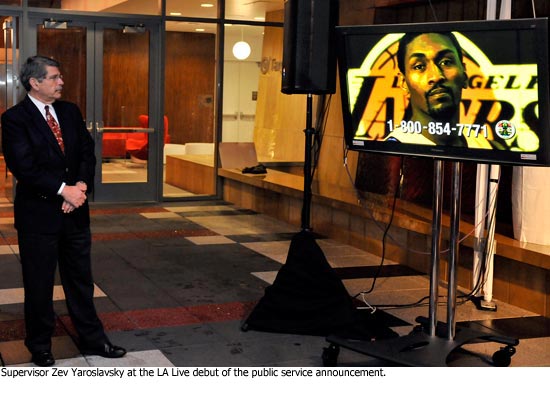













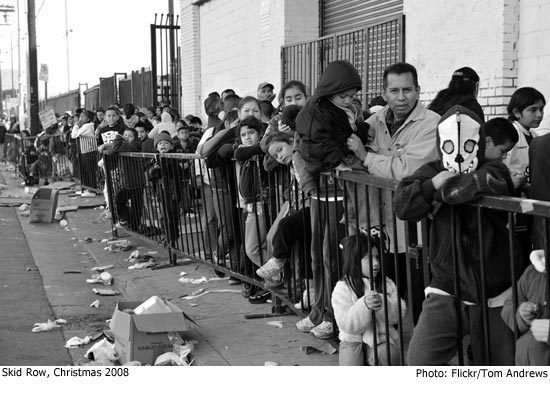



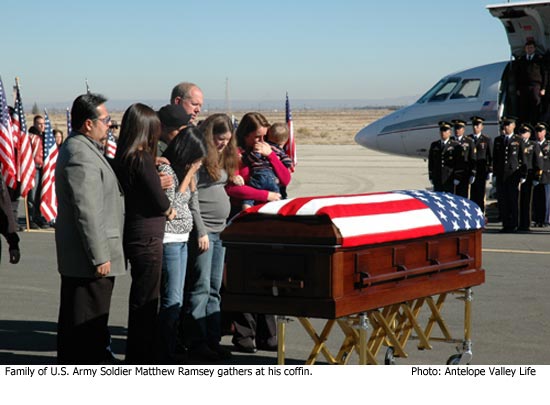





 Check for the latest closure information
Check for the latest closure information








